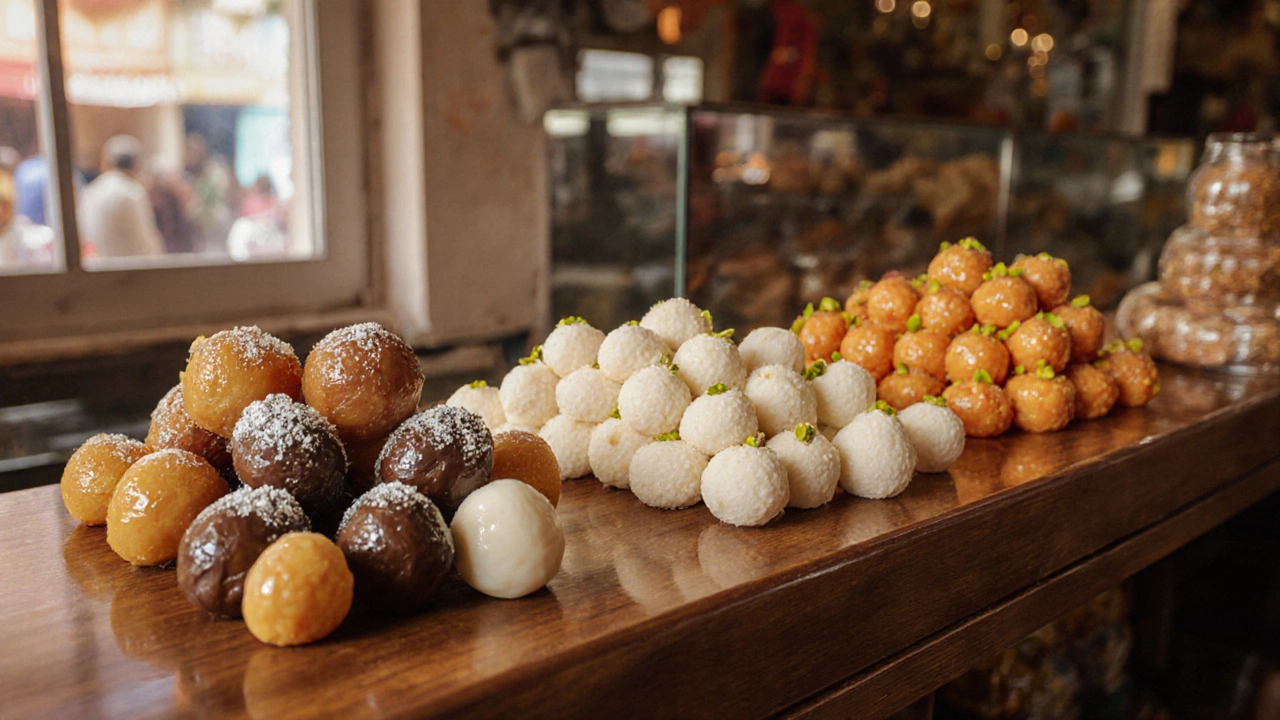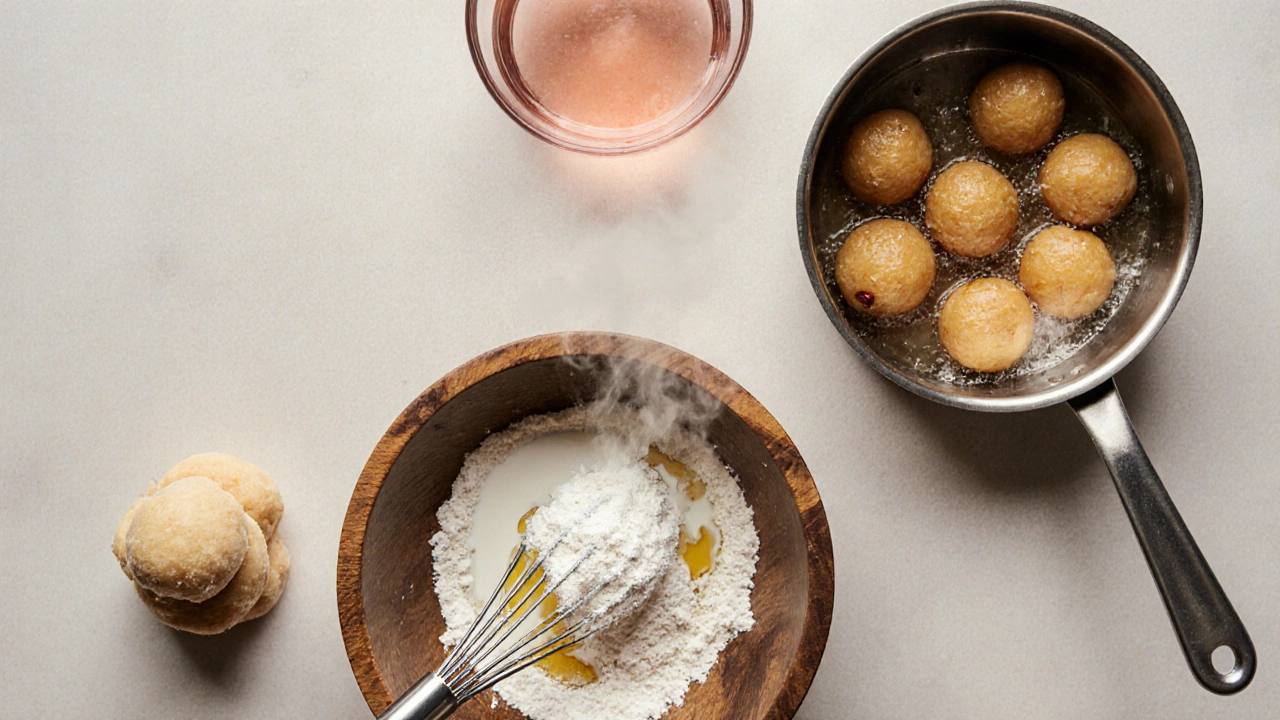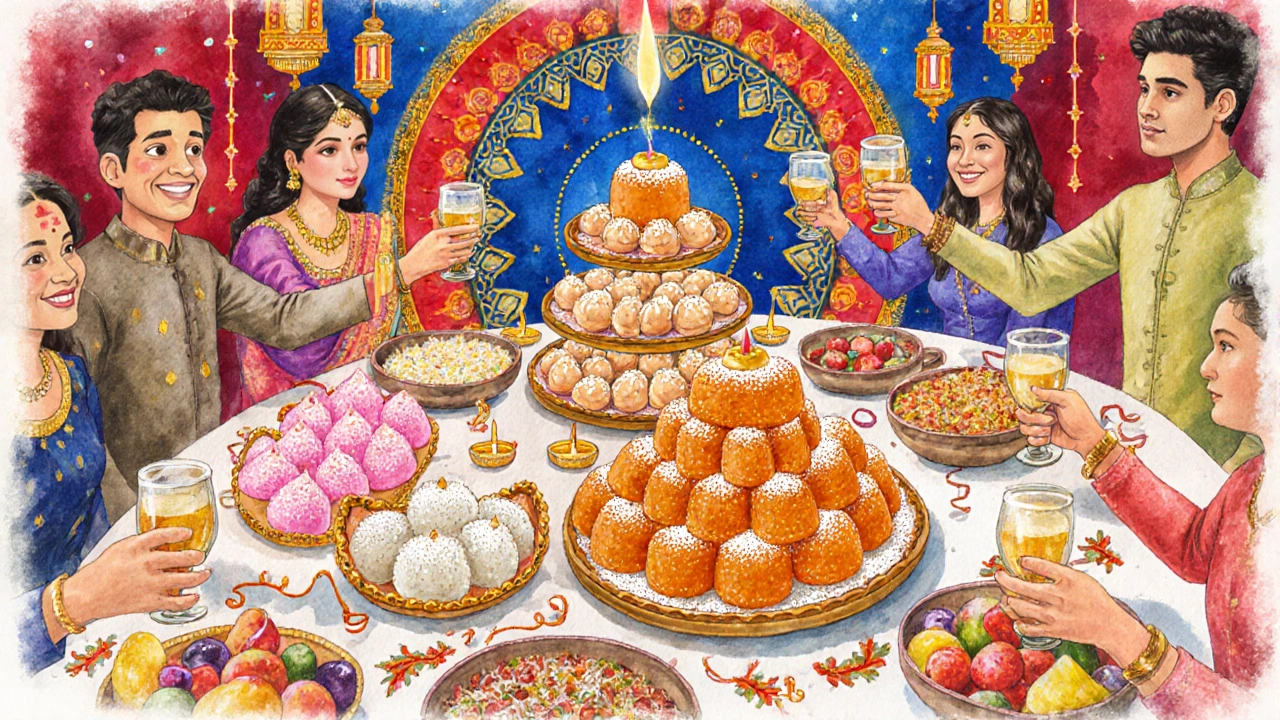
Key Takeaways
- Most traditional mithai contain dairy, ghee, or honey, but several varieties are naturally vegan.
- Read ingredient labels carefully - terms like "clarified butter" or "casein" mean the sweet isn’t vegan.
- You can easily veganic‑ify popular sweets by swapping ghee with coconut oil and milk with soy or oat milk.
- Store‑bought vegan mithai are growing in popularity; look for certifications or trusted brands.
- Keep a quick‑reference table handy when shopping or planning parties.
Indian confectionery, known as Mithai is a diverse family of sweets made for festivals, weddings, and everyday treats. The word itself just means "sweet" in Hindi, but the reality is a whole pantry of ghee, milk solids, and honey hidden behind glossy finishes. If you’re wondering vegan mithai options, you’re not alone - vegans are increasingly craving those familiar flavors without compromising on ethics.
Why most mithai aren’t vegan
Two ingredients dominate traditional recipes:
- Ghee - clarified butter that adds richness and a buttery aroma.
- Milk solids (khoya or mawa) - cooked down milk that gives sweets like Kaju Katli is a popular cashew‑based confection, often finished with a thin layer of edible silver leaf.
Both are animal‑derived, so they automatically disqualify a sweet from being vegan. Some recipes also slip in honey as a sweetener or use caramelized milk for color. If any of those show up on the label, the mithai is out for vegans.
Common non‑vegan mithai (and what makes them so)
Here’s a quick rundown of the most beloved sweets that usually contain dairy or honey:
- Gulab Jamun - made from khoya or milk powder, fried in ghee, then soaked in a sugar‑syrup that may contain honey.
- Ladoo - the term covers many variations, but most classic recipes (Besan, Motichoor) blend ghee and condensed milk.
- Barfi - a dense fudge typically made with condensed milk and ghee; flavored versions add nuts but still rely on dairy.
- Rasgulla - spongy cheese balls simmered in sugar syrup; the cheese (paneer) is milk‑derived.
- Peda - soft milk‑based discs, often finished with a dollop of ghee on top.
All of these are delicious, but if you need a vegan diet, you’ll want to look for alternatives or homemade conversions.

Naturally vegan mithai you can enjoy
Surprisingly, several sweets are either historically dairy‑free or can be made vegan without sacrificing taste:
- Soan Papdi - a flaky, sugar‑based sweet that traditionally uses ghee, but many commercial versions replace it with oil, making the final product vegan-friendly.
- Mysore Pak - originally a ghee‑heavy treat, but the rise of “vegan Mysore Pak” uses coconut oil and almond milk powder, achieving the same crumbly texture.
- Badam Halwa - almond‑based halwa can be prepared with plant‑based milk (soy or oat) and oil, turning it vegan.
- Fruit Chaat - not a traditional mithai, but a sweet fruit mix tossed with chaat masala, lime, and agave. It’s wholly vegan and often served as a dessert.
- Jaggery Ladoo - uses jaggery (unrefined cane sugar) and roasted gram flour, bound together with a splash of plant‑based oil. No dairy needed.
When you spot these on a menu or in a sweet shop, double‑check the ingredient list. Many brands still add a pinch of ghee for gloss.
How to veganise popular mithai at home
If you love a particular sweet but can’t find a vegan version, try these swaps. The goal is to mimic the creaminess and melt‑in‑the‑mouth feel that dairy provides.
- Swap ghee for a neutral oil - coconut oil adds a subtle tropical note, while refined sunflower oil keeps the flavor neutral.
- Replace milk powder or khoya with soy/almond milk powder - these powders absorb moisture similarly and give a smooth texture.
- Use coconut cream instead of condensed milk - blend canned coconut cream with a little maple syrup and simmer until thick.
- Choose agave or maple syrup over honey - they dissolve well in syrups and keep the sweetness level consistent.
- Finish with vegan-friendly garnish - edible silver leaf is fine, but for extra shine use a brush of melted coconut oil.
Here’s a quick vegan Gulab Jamun recipe to illustrate the process:
- Combine 1 cup soy milk powder, 1/4 cup all‑purpose flour, 1 tsp baking powder.
- Add 2 tbsp melted coconut oil and enough oat milk to form a soft dough.
- Roll into small balls, fry in warm coconut oil until golden.
- Soak in a syrup made of 2 cups sugar, 1 cup water, a splash of rose water, and 1 tsp lemon juice.
The result is a fluffy, aromatic sweet that feels just like the classic version, but it’s 100 % plant‑based.

Quick reference: Vegan status of common mithai
| Sweet | Typical Non‑vegan Ingredients | Vegan Possible? | Typical Vegan Substitute |
|---|---|---|---|
| Gulab Jamun | Khoya, ghee, honey (optional) | Yes | Soy milk powder, coconut oil, agave |
| Ladoo (Besan) | Ghee, condensed milk | Yes | Sunflower oil, oat milk powder |
| Kaju Katli | d>Khoya, ghee | Yes | Almond milk powder, vegan butter |
| Barfi | Condensed milk, ghee | Yes | Coconut cream, coconut oil |
| Rasgulla | Paneer (milk cheese) | Yes | Tofu or soy cheese curds |
| Peda | Milk powder, ghee | Yes | Cashew paste, vegan butter |
| Soan Papdi | Ghee (often replaceable) | Often | Vegetable oil, powdered sugar |
| Mysore Pak | Ghee, milk solids | Increasingly | Coconut oil, almond milk powder |
Use this table as a cheat‑sheet when you’re strolling through a sweet shop or scanning online menus.
Tips for buying vegan mithai
- Look for “Vegan” or “Dairy‑free” logos on packaging.
- Read the ingredient list - terms like "casein," "whey," "milk solids," or "ghee" are red flags.
- Choose sweets from reputable brands that publish a full ingredient breakdown (e.g., Amul’s vegan line, Urban Platter’s dairy‑free barfis).
- If you’re at a local Indian sweet shop, ask the staff: “Do you have any sweets made without milk or ghee?” Most shops can whip up a quick vegan batch on request.
- Buy in small batches. Fresh sweets taste better, and you avoid waste if a batch turns out non‑vegan after a closer look.
Frequently Asked Questions
Is honey considered non‑vegan in mithai?
Yes. Vegans avoid honey because it’s an animal product, so any mithai sweetened with honey is off‑limits unless a vegan alternative like agave or maple syrup is used.
Can I eat store‑bought barfi if it says ‘no added milk’?
Check the full ingredient list. Some brands label “no added milk” but still use ghee or milk‑derived butter. True vegan barfi will list a plant oil and a dairy‑free milk powder.
What’s a quick vegan sweet for festivals?
Jaggery Ladoo made with roasted gram flour, jaggery, and a splash of coconut oil can be assembled in minutes and looks festive.
Are all Soan Papdi sold today vegan?
No. Traditional Soan Papdi uses ghee, but many manufacturers have switched to vegetable oil. Look for a label that explicitly mentions “no ghee” or “vegan”.
How can I make Rasgulla vegan at home?
Use tofu or soy‑based cheese curds in place of paneer, shape into balls, and simmer in a sugar‑lemon syrup. The texture stays spongy, and the taste is familiar.
Whether you’re planning a birthday cake, a Diwali feast, or just a midnight snack, knowing which mithai are vegan lets you indulge without compromising your values. Keep the cheat‑sheet close, experiment with simple swaps, and you’ll discover a whole world of plant‑based Indian sweets that taste just as celebratory.